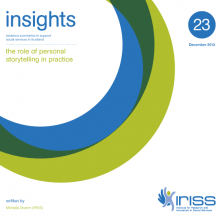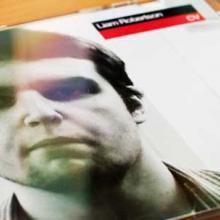Background
Creative storyboarding is a great way to bring a story to life. The technique dates back to the 1930s when it was widely used by Walt Disney and today it is still an integral part of film and theatre production (read more at Wikipedia). In recent years the technique has been adapted to create video animations that harness the power of graphic media to explain and simplify complex concepts. In part this has been stimulated by the availability of services such as YouTube and Vimeo which make it easy and affordable to share video online.
Here are some examples of great and inspirational storyboards:
- Changing Education Paradigms (RSA)
- Stephanie Flanders explains quantitative easing
- Social bookmarking in Plain English
Our approach
We thought it would be interesting to try out the technique with one of our recent Insight guides (No. 12 Measuring personal outcomes: Challenges and strategies). The Insight guides are evidence summaries which, in printed format, have proved very popular. Evidence suggests, however, that practitioners sometimes find it difficult to find the time to read even short evidence summaries. Perhaps a seven-minute audio visual guide might provide the stimulus to read more?
The storyboard version has in fact made quite an impact and has been very well received, so here is how we did it.
Step 1. Get the story straight
Before starting, make sure you are clear about the precise message you wish to convey or story you want to tell. Clarity and precision are paramount.
A useful technique is Who? What? What?
- Who is your message aimed at?
- What message to you want them to hear?
- What do you want them to do as a result?
This technique is used in advertising campaigns, both in the commercial and public sector.
The Herald newspaper ran a campaign for many years with the strapline 'Never miss an issue'. This cleverly reminded the reader (who) that The Herald covered all the issues (what) and that you should buy it very day, ie every edition or issue (what).
Think about campaigns about drinking and driving, smoking etc. How did they get the message across?
Step 2. Write the script
The script is of vital importance and you should spend some time perfecting it so that it tells the story clearly and simply. Remember that the script will be spoken, and the spoken word is different from the written word. So, try to write the script as it will be spoken and don't use jargon. If you have to use specialist terms or concepts, explain what they mean.
Do a word count: audiobooks are recommended to be 150–160 words per minute, although some research suggests adults can listen with full comprehension at 300 wpm. So for a four-minute animation you should aim for about 600 words: more than that and you will need to talk more quickly!
Step 3. Edit the script
All scripts benefit from editing, several times usually. Ask colleagues to read it and ask questions. This will help make sure the message is clear. Metaphors can be useful but do try to avoid over-use or mixing metaphors (for example "If we can hit that bullseye then the rest of the dominoes will fall like a house of cards"). Have a look at newspaper style guides. For example, The Economist, offers tips on how to improve the clarity of your writing.
Step 4. Record the voice-over
Our Insight storyboard was recorded in an ordinary meeting room by one of our own staff using a Zoom H2N recorder [around £140 - search google for the best price], but we have used professional voice-over artists and recording studios in the past and can offer some suggestions.
A professional will cost anything from £100 upwards. The main benefit of using a professional voice artist is that they will deliver a high quality recording quickly and efficiently.
Step 5: Creating the storyboard
The storyboard is the graphically depicts the story in a series of frames or scenes, a bit like a comic book.;
Different artists will have there own preferred way of working. Some work just from your voice-over recording, and some might prefer that you sketch out your story using a slide presentation package such as Powerpoint. Similarly, some artists may ask for a copy of your script as well as the voice-over so that they can better understand your message. Make sure the script and the vocal match!
However, you will need a professional artist, unless you know a gifted amateur. The artist will create and film the drawings synchronised to the voice-over track. This bit is quite difficult to do in-house.
Companies offering professional storyboarding services include:
- Ogilvie Design: http://www.ogilviedesign.co.uk
- Think Visually Studios: http://www.thinkvisuallystudios.com
Step 6. Share your storyboard
Once your storyboard is ready, it's easy to share it using popular video sites such as Youtube or Vimeo.
Costs
The costs of producing a storyboard vary widely. Ours was ten times cheaper to produce than our highest quote. You can save money by recording your own voiceover, as we did. For guidance, the financial cost of producing the storyboard (not including our staff time) was roughly equivalent to printing 1,000 copies of the Insight on which it was based.
The important point is to consider the benefits and impact against the cost.
More information
- Writing a script
- Some tips on video filming
- Autism - telling a story through video. How we made Liam's Story
- How Much Does an Animated Explainer Video Really Cost to Make?
- Tips on editing audio



